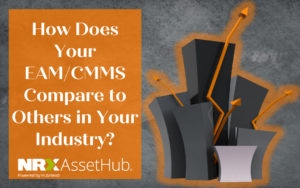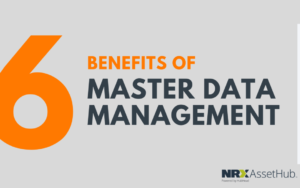
For asset-intensive organizations, as Bergeson says, the importance of listening to data cannot be overstated — especially when it comes to EAM master data; it provides a powerful insight for current and future business operations. For this reason, companies strive to have reliable master data. However, many run into issues — benchmarking provides a pathway for mastering master data.

Why is Master Data Important?
Master data contains core information about an enterprise’s financial, customer, supplier, technical and product information; it is the cornerstone of a business’s ability to make informed decisions. Complete, accurate, and up-to-date information can improve asset performance while reducing risk and maintenance costs.
Although asset-intensive companies understand the significance of good master data, they are often unaware of inaccurate, incomplete, or outdated information in their EAM/CMMS system. Consequently, businesses continue operating with false information, which can impact productivity initiatives.
Why Benchmark EAM Master Data?
In the current competitive industry, mediocrity is not an option. Businesses are facing the ever-growing pressure to improve maintenance processes; therefore, adopting EAM/CMMS practices similar to industry leaders is essential: benchmarking master data is the key to doing so.
Benchmarking identifies critical issues by comparing EAM/CMMS performance to industry best practices. In our experience, many companies benchmark their EAM master data to know where to start bridging gaps.
Why are Industry Leaders Choosing to Benchmark Their EAM Master Data?
Industry leaders choose to benchmark their EAM master data because they want to avoid unexpected and costly issues.
Here are some ways inaccurate master data impacts businesses:
– Work management: Planners and technicians can spend as much as 30% to 40% of their day locating and verifying information if they cannot trust or find master data. Consequently, this leads to decreased wrench time, incomplete maintenance plans, and inefficient use of specialized skills.
– Information Management: The maintenance workforce is aging; soon, their in-depth understanding of maintenance information will be unavailable to the business. As such, recording their knowledge in EAM master data can bridge this knowledge gap; future maintenance personnel can access the information through the EAM/CMMS even when older staff leave.
– Maintenance Costs: Reactive maintenance is two to five times as expensive as planned and predicted maintenance. Accurate EAM master data allow correct preventative maintenance plans to be made.
How HubHead Can Help You Benchmark Your Master Data
If you have noticed issues in your master data, but do not know where or how to start addressing them, we can help you. HubHead’s team of experienced consultants can evaluate your master data against industry best practices. We can provide a practical ROI-based plan to address master data-related issues.
To learn more about our services, click the links below to download our brochure or visit our website. To contact one of our consultants directly, please book a meeting — we would be glad to answer any questions.

Signs There are Gaps in Your EAM/CMMS System

Tips for Effective Spare Parts Management

6 Benefits of Master Data Management
Share this article


